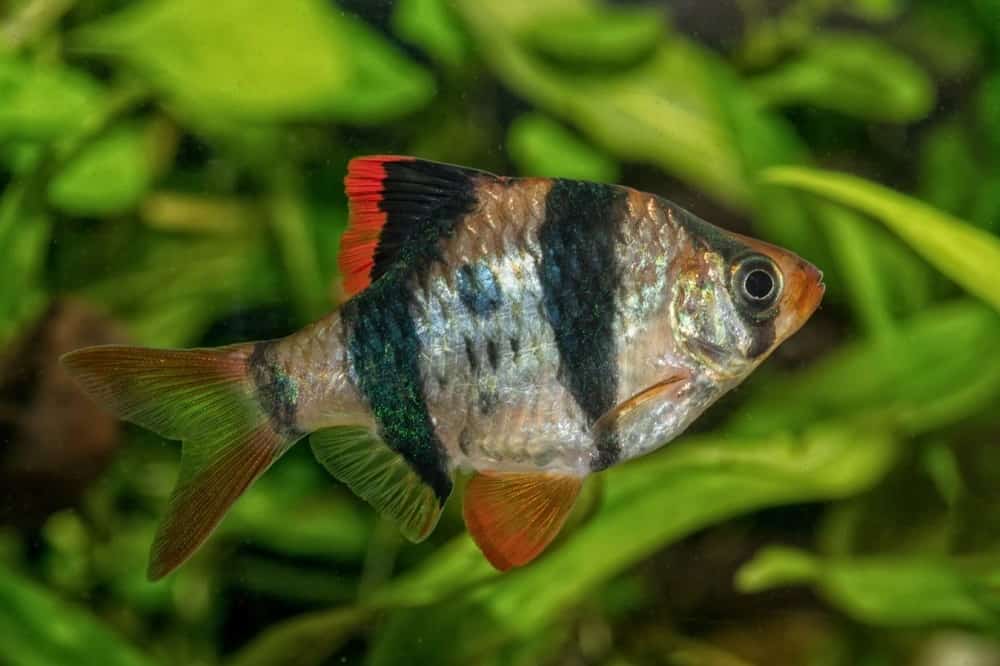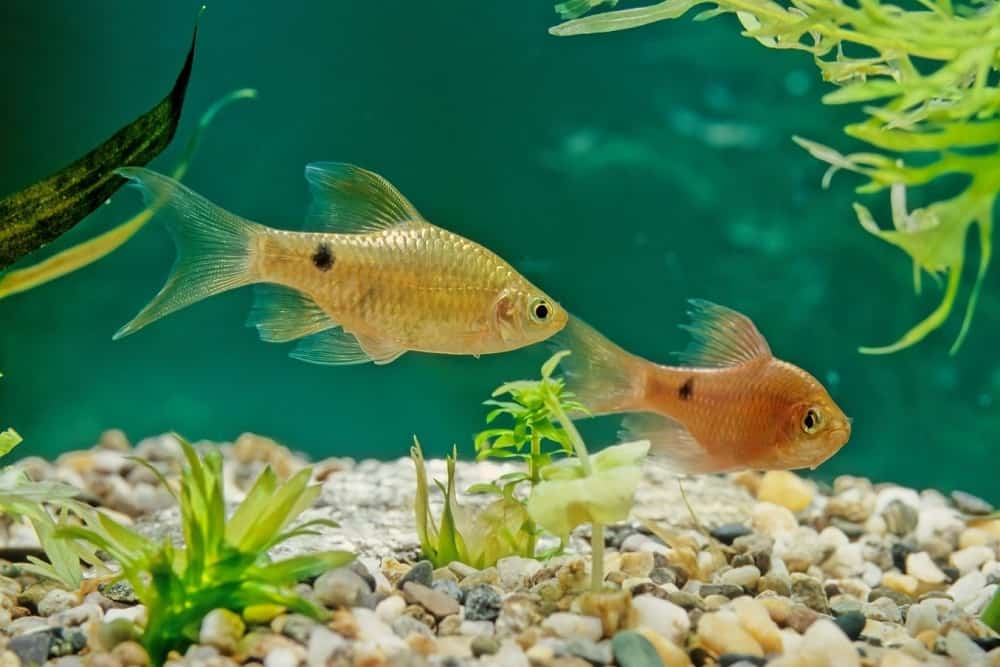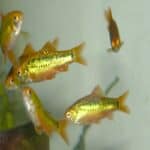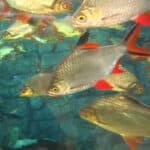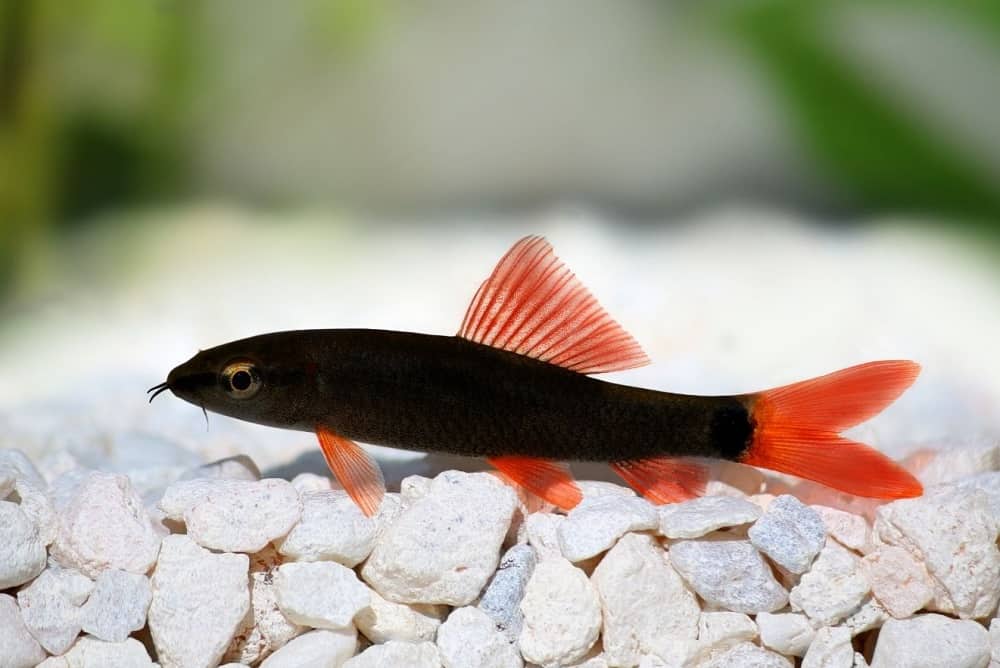Way back in the 1970s, the Odessa Barb, whose scientific term is Pethia Padamya, made its official debut in animal lover groups in Odessa, Ukraine. Due to the obvious male’s striking red hue from stem to stern, which mimics that of a ruby, the name “Padamya” is Burmese for ruby.
It has been around for a long time in the aquarium industry, but it was only formally characterised in 2008. Their appeal has skyrocketed in recent years, and it’s clear to see why.
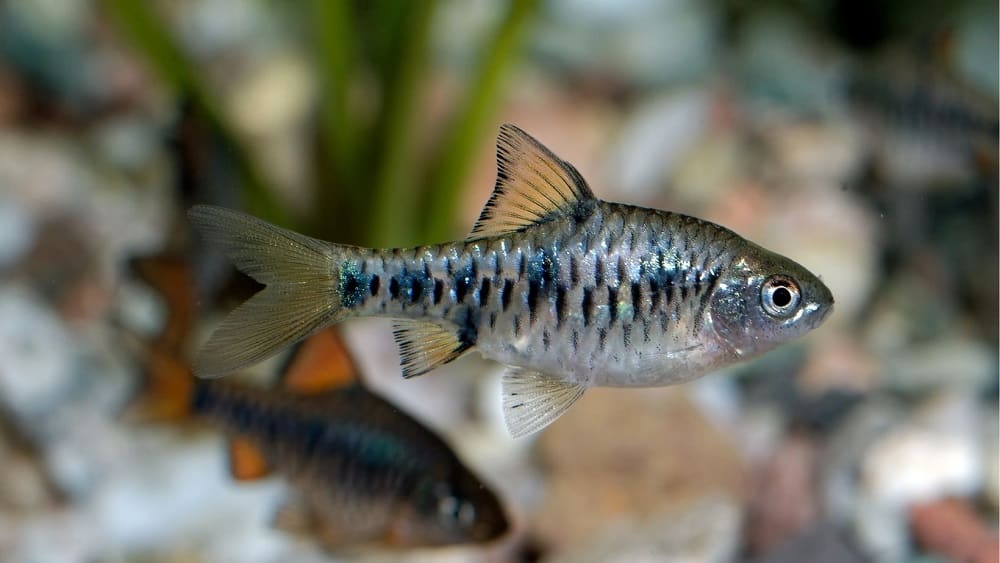
They are A very energetic and typically pleasant fish who prefers to live in a social tank with its friends. In this article, we’ll guide you through what it takes to care for this species and how they tend to live.
Care Guide
Tank Size
The Odessa Barb requires a minimum tank size of 30 gallons. If you have the space, we recommend keeping them in a little larger tank. These are incredibly active fish who will greatly benefit from the increased space. It’s also important to note that people who’ve seen the variety survive the best tend to keep them in aquariums greater than 30 gallons.
Tank Mates
Due to their placid demeanour, there are many alternatives for Odessa Barb tank mates. This species gets on well with almost any non-aggressive creature that isn’t looking for food.
Some examples of suitable tank mates for Odessa Barb include Bristlenose Pleco, Cherry Barb, Neon Tetra, Chili Rasbora, Harlequin Rasbora, Ember Tetra, Bolivian Ram Cichlid, and Apistogramma.
If you want to keep Odessa Barbs with any of the usual freshwater aquarium snails, be mindful. Although this research has been completed by certain fishkeepers, it has been done in a large enclosure.
Same Species Tanks
Some fishkeepers believe the Odessa barb to be a low-maintenance and even long-lasting fish. Because this is a calm schooling species, these should be housed alongside at least 5-6 other calm varieties, with the exception of long-finned species.
Water Parameters
The Odessa Barbs have a wide range of water parameters needed to deal with. This means they’re very low-maintenance, particularly if you’ve kept fish before.
When it comes to their tank conditions and water parameters, the most key point to remember is to maintain things as regularly as you possibly can. These fish, like any other freshwater species, are susceptible to rapid changes.
For example, you should try to keep the water temperature in your aquarium between 70 degrees fahrenheit and 79 degrees fahrenheit. Additionally, you should keep the pH levels of your tank between 6 and 7. When it comes to water hardness, the tank should be somewhere between 4 KH and 10 KH.
You must monitor these variables more frequently after you first get all these fish established in their large tank. You can lessen the number of these inspections after you’re satisfied it’s all steady.
What To Put In Their Tank
Building the ideal habitat for Odessa Barbs necessitates thinking about their native environment. As a result, when it concerns this species, plants should be your primary focus. Because these fish rely heavily on flora in their natural habitat, you must plan properly.
They tend to spend a lot of time darting around the tank plants and sheltering in them if they need some solitude.
But when it comes to the precise plant species you incorporate, you have a lot of possibilities. Hornwort and water wisteria are two popular alternatives that tend to work well for fishkeepers. However, feel free to try new things.
Other objects such as driftwood, rocks, and caves can be added if desired. These are curious, lively fish that will gladly investigate any objects in their environment.
Odessa Barbs require a large amount of space to swim, and an aquarium that is too small will make them irritable and anxious. Plants and swimming space should be prioritised.
Common Diseases
The Odessa Barb is not afflicted with any specific diseases. Although this is a wonderful thing, it should not rule out the possibility of them becoming ill in other ways.
If you’re not vigilant, any of the typical aquatic diseases can hit. The most prevalent is Ich, which can be extremely dangerous if not treated quickly.
As a fishkeeper, it’s your obligation to keep an eye on your fish for any indications of illness or disease. Strange behaviour, a general fatigue, an unwillingness to eat, and obvious scars or spots should all be suspected. The smartest thing you can do if you notice something that worries you is to react fast. Consult your veterinarian, quarantine the diseased fish if feasible, and follow the treatment recommendations.
Food & Diet
Odessa Barbs need a wide range in their diet, which isn’t overly complicated to provide. This species has an insatiable appetite (because of their high level of physical activity), therefore a few grains of food here and there won’t suffice.
Alternatively, you should give them a nice flake meal to start with and then supplement atop of that. This will provide an excellent nutritional basis while also allowing you to customise the rest of their meals.
Aside from that, experts recommend additional meat and vegetables. Brine shrimp, bloodworms, and daphnia are all excellent sources of protein. Fruits and vegetables and lettuce are among some of their favourite foods.
It’s a smart option to keep a strict routine and keep track of how much feed you’re placing in the aquarium to prevent overfeeding them. Many Odessa Barb keepers feed their animals twice every day.
Lifespan
An Odessa Barb’s lifetime is normally around 3 to 5 years. Some individuals have been reported to have exceeded the higher end by a year or two, but this is extremely rare. Taking appropriate care of such fish is by far the most efficient approach to ensure that they live a long and healthy life.
Healthy nutrition, decent water purity, and appropriate parameters have a huge effect.
Appearance
The body is long, oval-shaped, and flat on the sides; the lateral line is incomplete; and the scales are big. Barbels aren’t present on the fish. The back is forest green, the sides have a metallic hue, and the belly is white.
Dark markings can be found around the tail fin and above the dorsal fins. The front spot is enlarged and mimics a vertical line at that point. On the abdomen, scales create a perforated design.
Size
When fully developed, the Odessa Barb measures roughly 3 inches long. Barb species are found in a wide range of habitats. The genetic variants and the standard of healthcare have the greatest impact on their growth. Buying your fish from a reputable seller can help them grow to their full potential.
Behavior & Temperament
There are just a few times when this species will become aggressive. One is if you don’t keep them inside a group of similar five individuals because this will make them scared all of the time. The other is when it comes to reproduction.
This species often prefers to go about their own business and swim all around the aquarium. They keep themselves entertained well. Their activity level is also extremely high. This variety, unlike most other aquatic species, will wander freely in the tank.
Because they are often in a school, this activity will almost always occur in a group.
Breeding
When you understand how to do it, breeding an Odessa Barb is rather straightforward. It’s quite easy to determine the males from the females due to their sexual dimorphism. You should first put these fish in a breeding tank.
Make sure the tank has twice as many ladies as males, and don’t forget to add some plants. It won’t be long until mating pairs emerge. This is easy to spot because their shoaling behaviour will be substantially different.
Some fishkeepers prefer to keep the parents in the aquarium and depend on a densely vegetated aquarium to keep the babies safe from their relatives. That strategy, in our judgement, is unduly dangerous. The embryos will hatch in a short time.
Prepare to serve the fry young brine shrimp once it occurs so that they can grow healthy and powerful.
Gender Differences: Male vs. Female
The females are usually a little larger and have a much more rounded body form than the males, indicating gender dimorphism in this species. Males are shorter, but their colouring is brighter, with a brilliant red stripe running down their body.
Fun Facts
- Barbs from Odessa live in a community and are exceedingly peaceful. The only thing to keep in mind is that they should not be kept in groups of less than five, and they may grow frightened throughout the breeding process.
- Odessa Barbs, like many other barbs, are fin nippers, thus it’s best not to have them in the same tank with tankmates with long fins and slow movement. The incidence of fin nibbling will be lowered if you keep them together.
- Odessa Barbs are tough because, unlike most other freshwater fish, they can endure a broad variety of water variables. Surviving is not the same as thriving, so maintain them in tanks with plants and somewhat acidic water if you really want them to grow.


